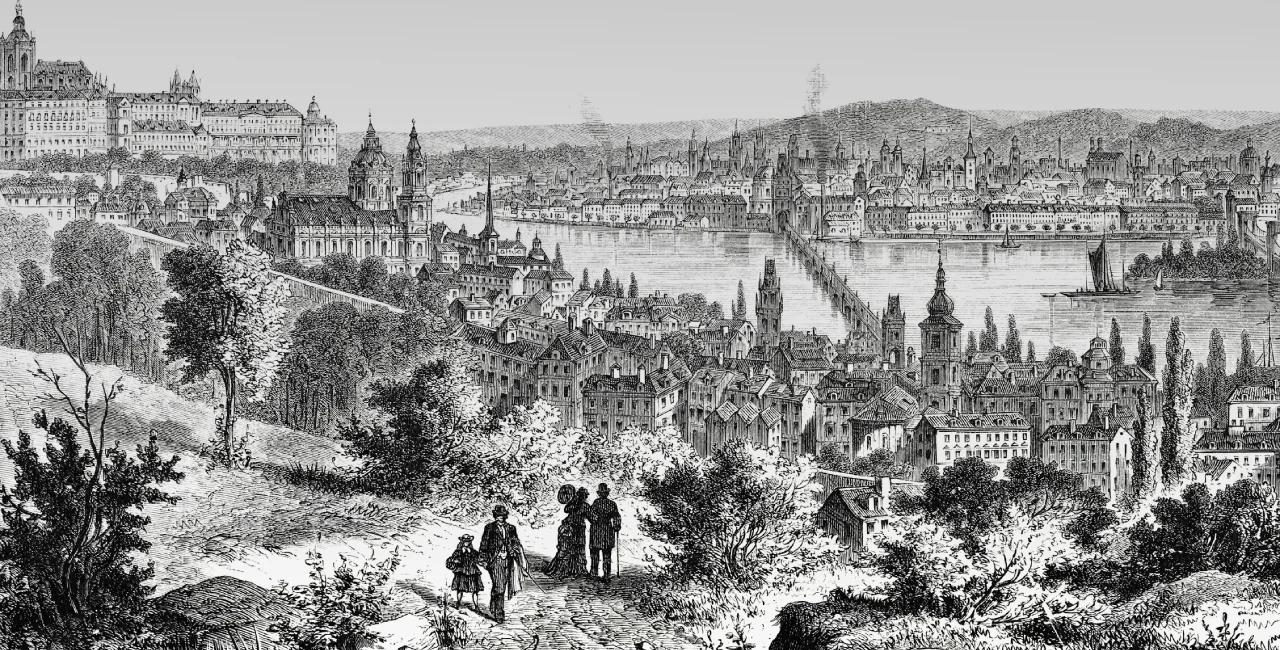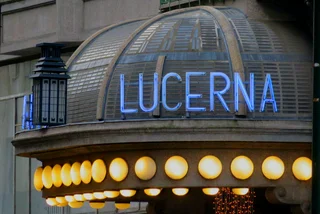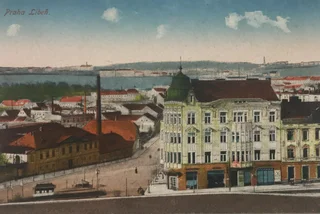While the history of Prague dates back thousands of years, the city as we know it today officially came into being in 1922. A new outdoor exhibition at Mariánské náměstí in front of City Hall honors 100 years of Prague this month through historical photos and information presented in Czech and English.
For centuries, Prague was only a small fraction of what it is today. In 1784, the separate cities of Old Town, New Town, Malá Strana and Hradčany merged to become a larger capital. They were joined by the Jewish Quarter (Josefov) in 1850, Vyšehrad in 1883, Holešovice and Bubny in 1884, and Libeň in 1901.
But the biggest change in the history of Prague took place 100 years ago, in 1922. An additional 37 municipalities joined the capital city that year to form what was unofficially deemed Greater Prague.
Those municipalities included Vinohrady, Smíchov, Žižkov, Karlín, Holešovice, and other suburbs outside of the historic center that we have come to appreciate as inseparable parts of Prague today.
"One hundred years of Greater Prague is a big event, and I wish our beautiful city only the best for this anniversary," Prague Mayor Zdeněk Hřib states in a press release for the new exhibition.
A total of three laws enacted in 1920 came into force on Jan. 1, 1922 to connect Prague with 37 surrounding suburbs and create a single metropolis. In the process, the population of Prague roughly tripled.
The new exhibition outside City Hall (Nová radnice) honors not only the foundation of the Czech capital as the larger city we know today, but also pays respects to officials who helped unite Prague and build a bustling metropolis in the years between the First and Second World Wars.
"The Greater Prague exhibition is not only a celebration of the founding of the capital as a metropolis, but it is also a memory of our predecessors in the city leadership," says City Councilor Hana Třeštíková, responsible for Culture and Tourism.
"Their efforts to manage Prague comprehensively as a whole are a great inspiration and motivation for us to continue their work and develop the city for the benefit of all Praguers."
At the exhibition on Mariánské náměstí, the development of the City of Prague between the two wars can be tracked through a series of eight panels containing photographs, illustrations, and information in both Czech and English.
It was during these formative years that modern Prague began to take shape with a burgeoning city infrastructure that included new utilities networks, housing developments, and a public transportation system.
The city officials who played a role in the development of Greater Prague included Milada Horáková, who worked in urban social policy in the capital city. Horáková was later executed by the communist regime following a show trial in 1950.
"Prague has already experienced a lot. In the last century, for example, we spent more years in dictatorship than outside it; right at the beginning of this century, our city was hit by an unprecedented flood," says Hřib.
"[Currently], we face two large-scale and unprecedented crises, first the Covid-19 pandemic and then the influx of refugees due to the Russian war of aggression in Ukraine. After every crisis in the past, Prague enjoyed a huge economic and construction boom. I see the current crises as a great opportunity for our city, and I believe that my vision for the further development of Prague will be fulfilled."
The outdoor exhibition at Mariánské náměstí in front of City Hall is open through April 30. Further information can be found at the website of Prague City Archives.












 Reading time: 3 minutes
Reading time: 3 minutes 




























